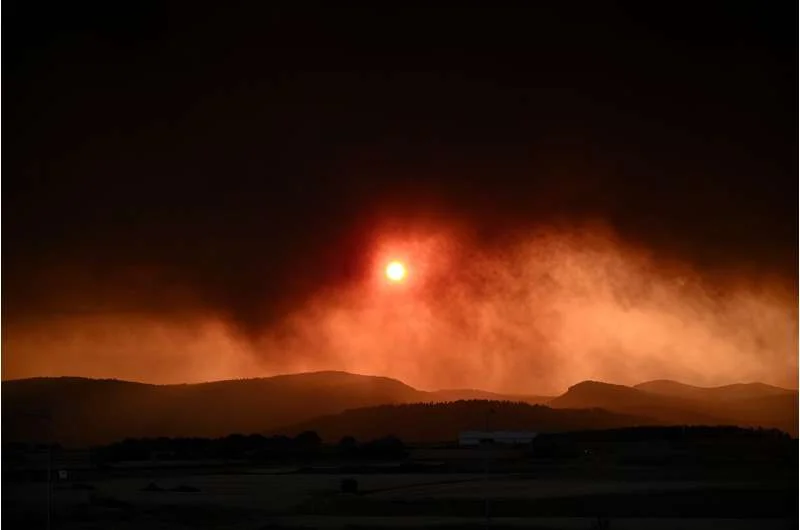The United Nations warned on Wednesday that climate change is causing more intense and more frequent heatwaves, creating a “witchcraft mix” of pollutants that threaten the health of humans and other creatures. Smoke from forest fires, which has recently affected many cities from Athens to New York, may be the most obvious sign of air pollution caused by heat.
However, the UN World Meteorological Organization’s annual bulletin on air quality and climate states that intense heat can trigger a number of other chemical processes that are harmful to human health.
“Heat waves degrade air quality, which in turn negatively impacts human health, ecosystems, agriculture and indeed our daily lives,” WMO president Petteri Taalas said in a statement. said.
A recent study by the University of Chicago Energy Policy Institute (EPIC) found that air pollution from fine particulate matter, such as sand and wildfires, as well as vehicle and industrial emissions, is the “biggest external threat to public health” worldwide.
Taalas emphasized that “climate change and air quality cannot be considered separately”.
“These go hand in hand and need to be tackled together to break this vicious circle.”
“More extreme”
While Wednesday’s report is based on 2022 data, Taalas warned that “what we see in 2023 is even more extreme” in terms of temperatures.
The European Union’s Copernicus Climate Change Service said on Wednesday that Earth has experienced three of its hottest months ever recorded, with last July the hottest on record, followed by August and 2023 will be the warmest year on record.
This is bad news for air quality levels.
“Air quality and climate are linked because the chemicals that affect both are interrelated, the substances responsible for climate change and air quality deterioration often emanate from the same sources, and a change in one inevitably leads to a change in the other.” ‘ said WMO.
For example, it has been pointed out that the burning of fossil fuels not only releases heat-trapping greenhouse gases, carbon dioxide and nitrogen oxide, into the atmosphere, but can also lead to the formation of pollutants such as ozone and nitrate aerosols.
Meanwhile, the WMO said researchers agree that climate change is causing more intense and more frequent heatwaves, leading to an increased risk of more serious wildfires.
“closely related”
“Heat waves and wildfires are closely related,” said WMO researcher Lorenzo Labrador of the Global Atmosphere Service Network, which compiled Wednesday’s bulletin.
“Smoke from bushfires contains a magical mix of chemicals that not only affects air quality and health, but also harms plants, ecosystems and crops, and increases carbon and greenhouse gas emissions into the atmosphere,” the application said.
The 2022 data detailed in the report showed how last year’s heatwaves fueled wildfires in the northwest United States, leading to unhealthy weather.
Increasing temperatures in Europe, as well as an unusually high amount of desert dust reaching the continent, are leading to increased concentrations of both particulate matter and ground-level ozone pollution, the report said.
High altitude or stratospheric ozone provides humans with vital protection against the sun’s harmful ultraviolet rays, while ozone near the Earth’s surface is harmful to human health.
It also reduces crop yield; Losses from ozone range from 4.4 to 12.4 percent on major food crops worldwide on average, and losses in wheat and soybeans reach 15 to 30 percent in parts of India and China. Source
Source: Port Altele
